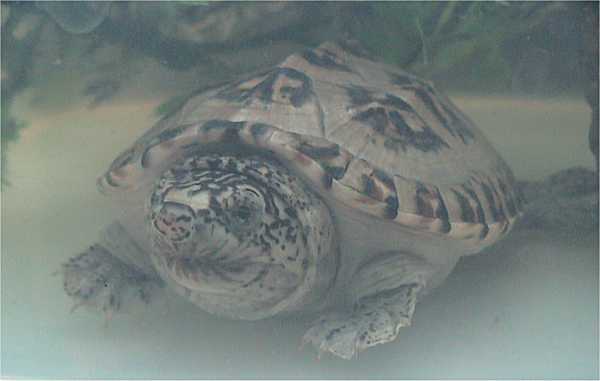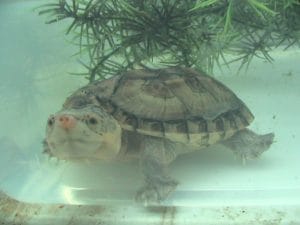Staurotypus triporcatus (Mexican musk turtle)
Home > Turtle Database > Staurotypus triporcatus (Mexican musk turtle)
Staurotypus triporcatus, commonly known as the Mexican musk turtle, is a large, robust freshwater turtle found in Central America. Recognized for its three prominent keels running along its carapace, this species is known for its aggressive temperament and strong bite.
Native To These Regions
Belize, Campeche (Mexico), Chiapas (Mexico), Guatemala, Quintana Roo (Mexico), Tabasco (Mexico), Veracruz (Mexico), Yucatán (Mexico)Native Turtle Species Map – Find Turtles by Region
Scientific Classification
Kingdom: Animalia
Phylum: Chordata
Class: Reptilia
Order: Testudines
Family: Kinosternidae
Genus: Staurotypus
Species: Staurotypus triporcatus
Common Names
Mexican musk turtle
Three-keeled musk turtle
This Hilarious Turtle Book Might Know Your Pet Better Than You Do
Let’s be real—most turtle care guides feel like reading a textbook written by a sleep-deprived zookeeper.
This one’s not that.
Told from the snarky point of view of a grumpy, judgmental turtle, 21 Turtle Truths You’ll Never Read in a Care Guide is packed with sarcasm, sass, and surprisingly useful insights.
And hey—you don’t have to commit to the whole thing just yet.
Grab 2 free truths from the ebook and get a taste of what your turtle really thinks about your setup, your food choices, and that weird plastic palm tree.
It’s funny, it’s honest, and if you’ve ever owned a turtle who glares at you like you’re the problem—you’ll feel seen.
Identification
Description
The Mexican musk turtle has a dark brown to black carapace with three distinct keels running along its length. The plastron is relatively small, leaving much of the turtle’s underside exposed. The head is large with powerful jaws, and the skin is dark with some lighter speckling.
Sexual Dimorphism
Males are generally smaller than females but have longer, thicker tails. Females tend to have a wider body structure, particularly when carrying eggs.
Check more turtles from the Staurotypus genus
Native Origin and Distribution
Geographical Range
This species is native to Mexico, Belize, Guatemala, and Honduras. It primarily inhabits slow-moving freshwater systems such as rivers, swamps, and lakes.
Preferred Habitat
Mexican musk turtles prefer warm, shallow water bodies with muddy or sandy bottoms and abundant vegetation. They thrive in both stagnant and slow-moving waters and are often found in areas with plenty of submerged structures for shelter.
Behavior
Feeding Habits
These turtles are carnivorous, feeding on fish, amphibians, crustaceans, insects, and mollusks. They use their strong jaws to crush hard-shelled prey like snails and crayfish.
Predators
Juveniles are vulnerable to birds, large fish, and mammals. Adults face fewer natural predators due to their tough shells and aggressive nature.
Reproduction
Breeding Season
Breeding typically occurs during the wet season when water levels rise, increasing nesting opportunities.
Reproductive Method
Females lay 2–6 eggs in a nest dug near the water’s edge. The incubation period lasts around 100–120 days, with hatchlings emerging fully independent.
Conservation
Extinction Status
Currently listed as Near Threatened by the IUCN, but local populations may face declines.
Threats
Habitat destruction, pollution, and collection for the pet trade threaten some populations. Overfishing in their native range also reduces food availability.
Conservation Measures
Legal protections exist in some areas to regulate trade. Conservation efforts focus on habitat preservation and awareness campaigns to reduce illegal collection.
Economic Importance
This species is occasionally kept as a pet, though its large size and aggressive nature make it less suitable for captivity. In some regions, it has been hunted for food, though this practice is decreasing due to legal restrictions.
Interesting Facts
Mexican musk turtles can emit a foul-smelling musk from their scent glands when threatened. Despite their sluggish appearance, they are strong swimmers and can lunge quickly at prey or threats. Their bite is powerful enough to cause serious injury, making them one of the more aggressive musk turtle species.

About Author
Muntaseer Rahman started keeping pet turtles back in 2013. He also owns the largest Turtle & Tortoise Facebook community in Bangladesh. These days he is mostly active on Facebook.













